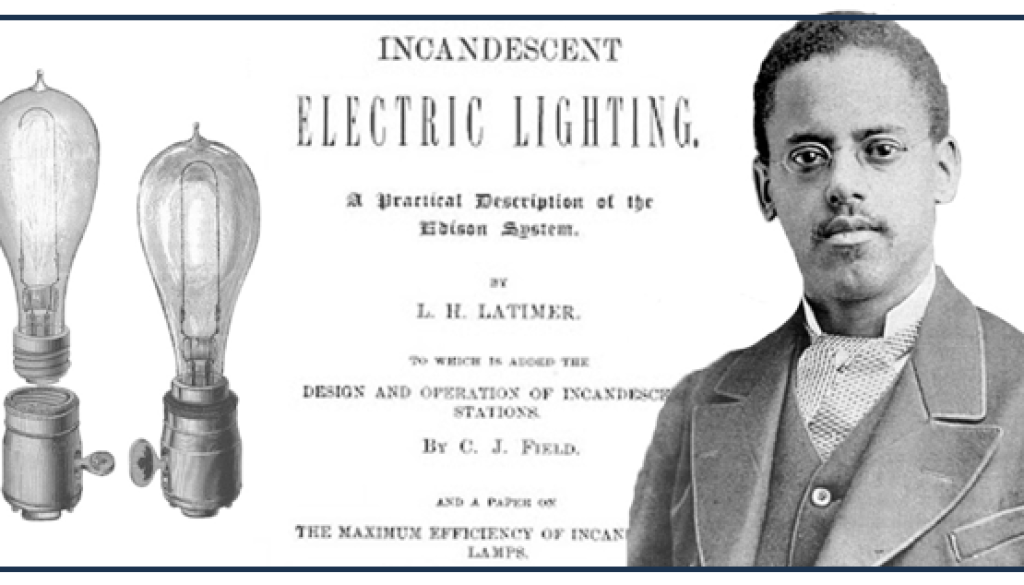Do You Know Who Lewis Latimer Was?
Thomas Edison (1847-1931) is recognized as the inventor of the light bulb. However, the story is more complicated. Edison’s bulb could not emit light for long because it had a filament made of bay wood, cedar, bamboo, and other fibers that burned quickly.
Lewis Latimer (1848-1928) used carbon filaments that allowed light bulbs to burn for hours instead of minutes. His invention made incandescent lighting practical and affordable. In 1882, Latimer drew the first electric light blueprints and patented the process. His engineering brilliance is shown in U.S. Patent Number 252,386. In 1881, Latimer traveled to New York, Philadelphia, Montreal, and London to supervise the installation of electric light systems, forever extending the length of the day. In Montreal, Latimer learned and worked in French. Numerous countries, states, and cities asked Latimer to write Incandescent Electric Lighting: A Practical Description Of The Edison System (1890).
Lewis Latimer, Black Inventor of Some Life Changing Inventions
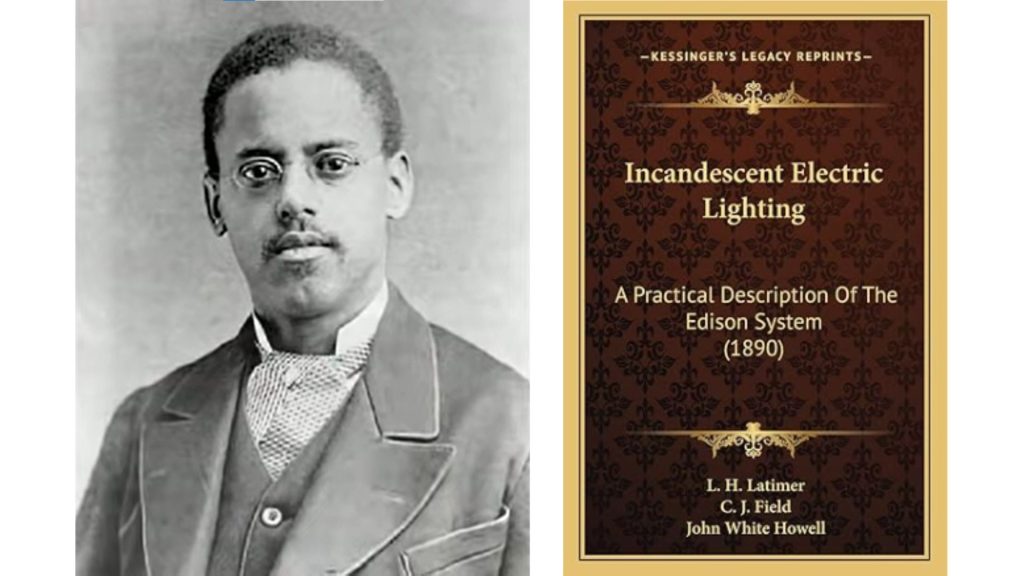
From Slavery To Excellence
Meet Lewis Latimer, who made the light bulb longer lasting Thomas Edison (aka the “Wizard of Menlo Park”) was a phenomenal genius, no doubt about it. That’s proven by the fact that Edison has 1,093 U.S. patents in his name, established America’s first research laboratory and is technically known as the inventor of the light bulb.
But there’s more to the story. Much more. And that much more is Lewis Howard Latimer, born 174 years ago on Sept. 4, 1848, to parents who had escaped their enslavement. Latimer is responsible for many of Edison’s patents because he not only worked as the original draftsman at Edison’s research laboratory but also was assigned by Edison to serve as his chief expert witness in the hundreds of patent infringement lawsuits filed by and against Edison. Latimer was an inventor, draftsman, engineer, and scientist as well as a poet, author, artist, flautist and philanthropist.The remarkable story of Latimer, the son of escaped slaves, shows the enormous hurdles he and his family overcame to excel. During slavery, it was a felony to teach a Black person to read or write – even in New York, Pennsylvania, and Connecticut! See Anti-Literacy Laws In the United States. Any Black person caught trying to learn to read or write risked having a finger cut off each time!
Yet, many Black Americans excelled in many fields even under those horrific conditions! It was the opposite of Diversity, Equity, and Inclusion! Blacks had to be SO exceptionally competent and superior that they overcame centuries of very vicious racism and violence when Blacks risked being lynched by the KuKluxKlan for any or no reason!
Lewis Latimer: The Unsung Hero of Invention
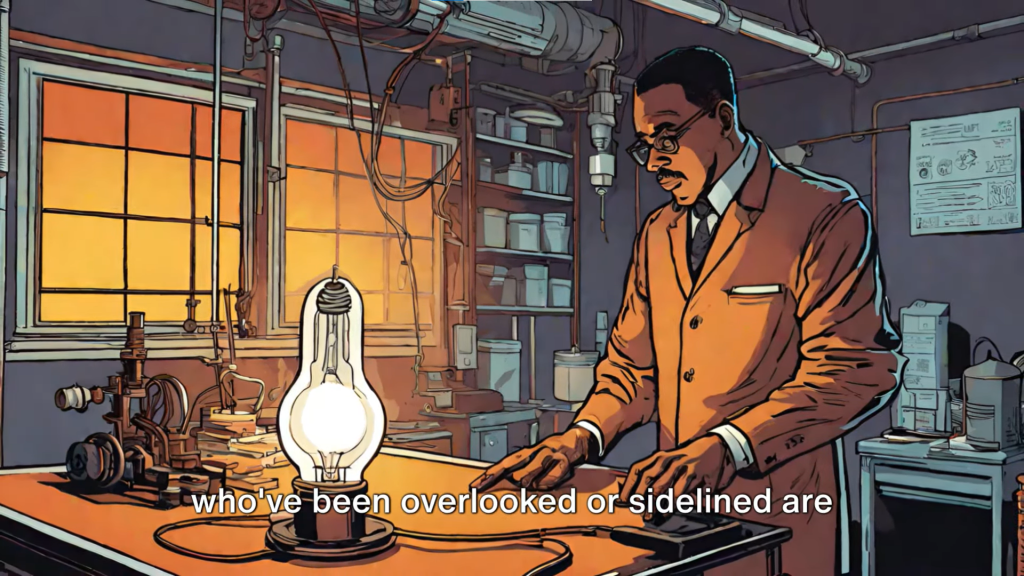
Lewis Latimer: The Man Behind a Better Light Bulb
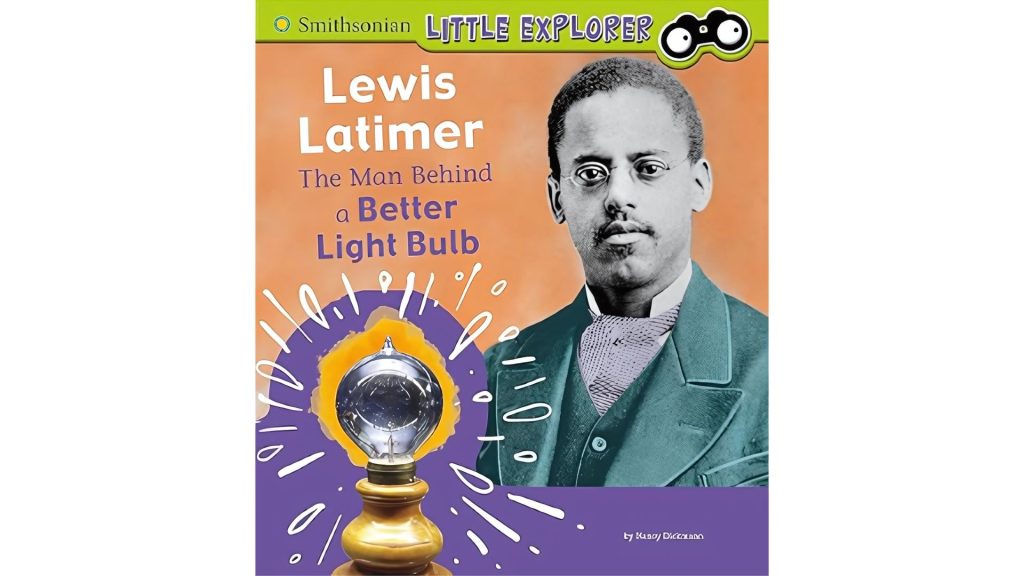
Latimer: Telephone Patent
When Crosby and Gould, Boston patent attorneys, hired Latimer as an assistant, he studied the mechanical drawing required for patent applications. He was paid $3 per week. Crosby and Gould later elevated Latimer to journeyman draftsman. Latimer was so skillful that he was given the position of Chief Draftsman and was responsible perfecting drawings on which the success of patent applications depended.
Alexander Graham Bell (1847-1922) became the most notable of Latimer’s clients when Bell retained Crosby and Gould for patent work on his designs for the telephone. Latimer was extensively involved in the drawings for this historic invention which was granted a patent in 1876. Bell is given credit for the invention of the telephone. However, it was only because Latimer drafted and submitted the patent just hours before a competitor that Bell got credit for the invention.
Latimer: Air ConditioningLatimer laid the foundation for the air conditioner in 1886 by creating the “Apparatus for cooling” which has U.S. Patent Number 334,078.
Lewis Howard Latimer Life Story: Inventor and Innovator
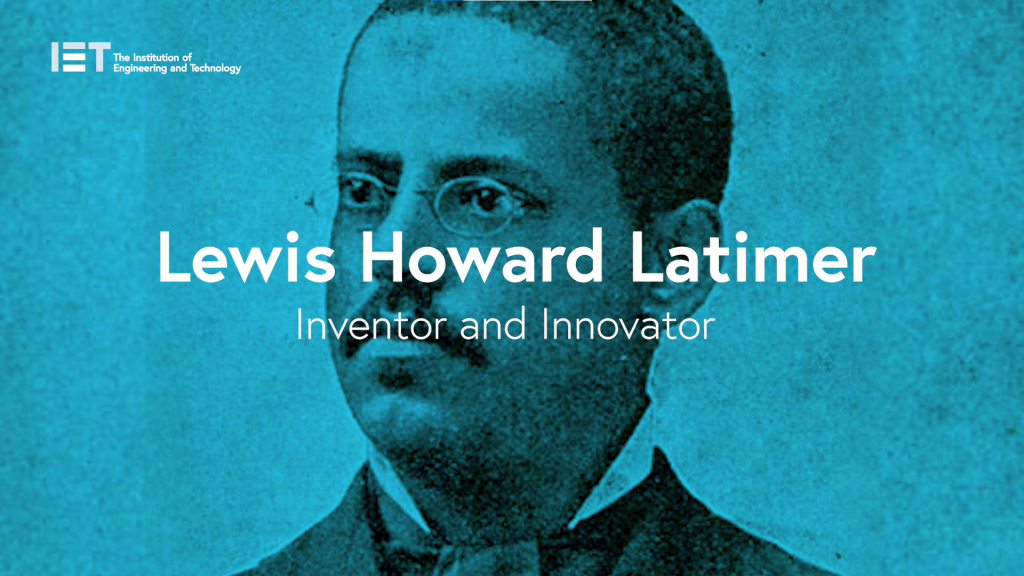
“Latimer was one of the first major African-American inventors, responsible for items such as the first water closet (or toilet) for railroad cars in 1874, as well as the forerunner to the air conditioning in 1886. He was most noted for his work with Thomas Edison, and for making electric light, or the light bulb, available to the world. Lewis Howard Latimer, the man who played an important role in Edison and Bell’s historic work and whose inventions have touched your life in more ways than you’ll know.
This is Lewis Howard Latimer Life Story
Inventor and Innovator Lewis Howard Latimer was born on the 4th September 1848 in Chelsea, Massachusetts and was the youngest of four children born to George and Rebecca Latimer. Six years prior to Lewis’ birth, his parents had been slaves in Virginia. They managed to escape and sought freedom in Boston, Massachusetts, but shortly after arriving in Boston, George was recognized as a fugitive and jailed. There was a trial, and the attempts to recapture George and return him to Virginia caused considerable agitation in Boston. When the trial judge ruled that Latimer still belonged to his Virginia owner, an African-American minister paid $400 for his release.
With this very humble background, Lewis Latimer’s family could only afford a few years of grammar school for him and his siblings. He developed a keen interest in the arts but especially in drawing, a skill that would benefit him hugely throughout his life. By the time of his adolescence, the Civil War had engulfed America, and in 1864, at the age of 16, Lewis enlisted in the Union Navy.
At the close of the war, Lewis was honourably discharged and secured employment as an office boy with the patent law firm, Crosby and Gould. Keen to advance himself and utilizing his interest in drawing Latimer taught himself mechanical drawing. His perseverance and passion paid off and Lewis eventually managed to become chief draftsman at the firm during his 11 years.
Lewis met and married Mary Wilson who he would also go on to father two daughters with. Latimer and Bell Lewis Latimer secured his first patent in 1874 for the Water Closet, an improved toilet system for railroad cars, and, in 1876, Lewis was hired by Alexander Graham Bell. Bell was working on his telephone invention and was in a race to get a patented design before anyone else registered a similar device. Latimer’s expertise in draftmanship meant that on 14th February 1876, Bell’s telephone patent was filed just a few hours earlier than Bell’s rival inventor Elisha Gray. If it had not been for Latimer’s expertise and knowledge, Bell may not have the fame that he still holds in the world to this day.
Light Bulb Invention
In 1880, Latimer began to work as a mechanical draftsman for Hiram Maxim, founder of the U.S. Electric Lighting Company and fierce competitor to Thomas Edison. Here, Latimer learnt so much about lightbulbs that by 1881, along with Joseph Nichols, he registered a patent for a light bulb with a carbon filament. Shortly afterwards, he received another patent for ‘the process of manufacturing carbons’ which was an improvement on the method for the production of the carbon filaments in light bulbs.
Latimer and Edison
With his knowledge and expertise in this field, he was eventually hired by The Edison Electric Light Company in 1884. Here he worked closely with Edison and became his patent investigator and expert witness, protecting Edison’s patent and inventions of imitators.
Impressed with Latimer’s technical knowledge, Edison encouraged Latimer to write his first book ‘Incandescent Electric Lighting: A Practical Description of the Edison System’. Latimer would also go one to become one of the charter members of the Edison’s Pioneers where he was the only African-American member of the highly prestigious group.
Latimer’s inventing talents weren’t limited to light bulbs. In January 1886, he invented an ‘early air conditioning unit seen as the grandfather of the modern air conditioning unit. Latimer stayed with in Edison’s company throughout the years as it merged with other companies to form General Electric, the same company that is active to this day.
Lewis Latimer came from so little and at a time in history where he was a 2nd class citizen, but through his hard work and determination, he managed to rise up and make important advancements in many technologies that we use today. Although not as much of household name as his contemporaries or colleagues, he truly deserves a place alongside them.
Latimer’s patented creations include:
- Improved toilet system for railroad cars (with Charles W. Brown, 1874)
- Support system for electric lamps (with John Tregoning, 1882)
- Device for cooling and disinfecting the air, a precursor to the air conditioner 1886)
- Locking rack for coats, hats, and umbrellas (1896)
- Book support for books on shelves (1905)
- Lamp fixture reducing vibrations and noise (1910)
Latimer taught English and drafting to immigrants in New York. He wrote poetry, played the violin and flute, and actively participated in community and church groups.
Lewis Latimer | Biography, Inventions & Facts
The story of Lewis Latimer and his house: Black inventor from 1860s- Someone Lived Here Podcast S1E2
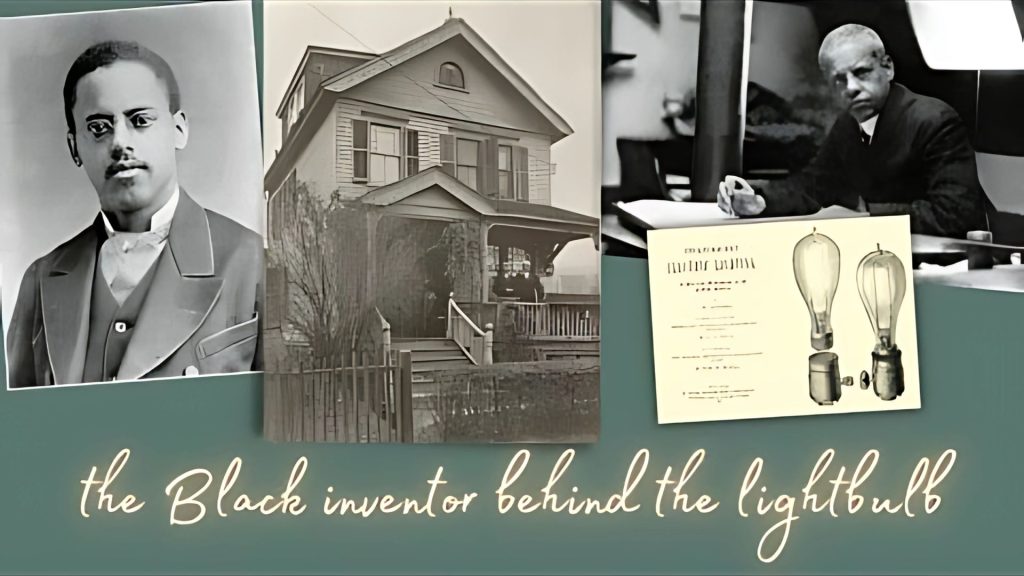
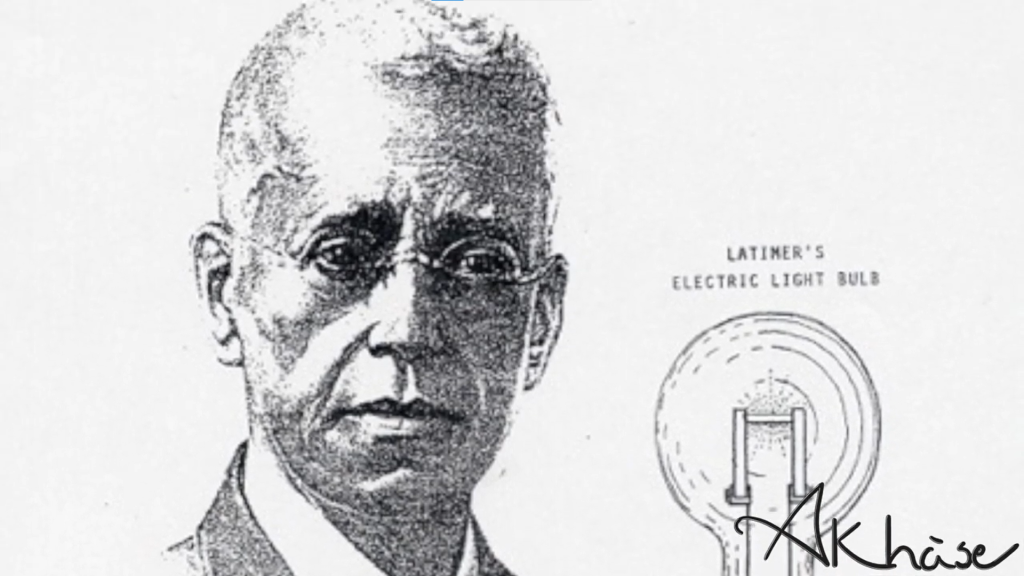
More Books
Lewis Howard Latimer: A Black Inventor
Lewis Latimer (Black Americans of Achievement)
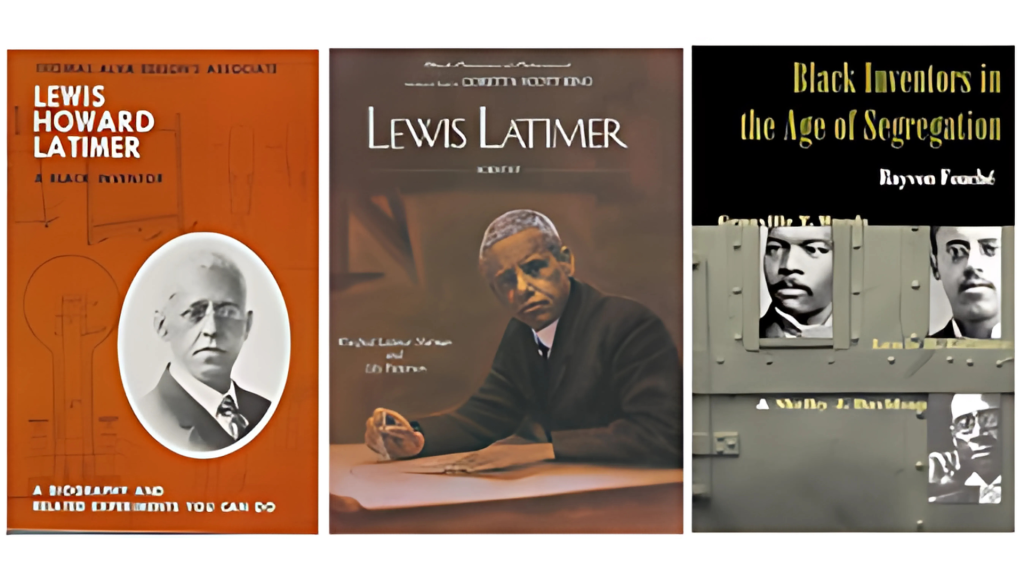
Lewis Latimer House Museum
NYTimes: Long in the Shadows, the Latimer House Museum Gets a Glow-Up
6/13/24The Queens home of the Black inventor who contributed to the invention of the lightbulb gets an overdue makeover.

In an episode of HBO’s “The Gilded Age,” Peggy Scott, the budding journalist, and T. Thomas Fortune, her discerning editor, expectantly await the illumination of the New York Times building in Lower Manhattan.
“Tell me, what are your thoughts on electricity?” Fortune says.
“Are you talking about Mr. Edison’s lights?”
“Well, Mr. Edison is not solely responsible,” Fortune says, correcting her.
“Who else was involved?” Scott asks.
Lewis Latimer, Fortune responds, a Black inventor: “He created a better carbon filament.
That’s the thing in the bulb that helps keep the lights on, so to speak.”
“Well, I’m sure that Mr. Edison will give Mr. Latimer his due credit at the ceremony.”
To which Fortune laughs and says, “I admire your wit, Miss Scott.”
Lewis H. Latimer did not get all the credit due him. His invention of a method to manufacture carbon filament to make lightbulbs mass-producible was patented in 1882, but he had been working at that time for Thomas Edison’s rival. (Latimer was generally recognized earlier, when the Equitable Building and the Union League Club in Manhattan were illuminated, but didn’t join Edison’s company until 1884.)
When Latimer died in 1928, he was described in a two-paragraph obituary in The Times as “an electrical engineer widely known throughout the United States.”
Today, though, he is perhaps best known as the namesake of a public housing development in the Flushing neighborhood of Queens and an elementary school in the Bedford-Stuyvesant section of Brooklyn. Beyond those markers, Latimer, who never got beyond elementary school himself, has been largely forgotten. Historians and civic leaders hope to rectify that with the reopening of the Lewis Latimer House Museum in Queens….
Starting June 15, it will be open to the public Friday through Sunday, 11 a. m. to 5 p.m., and during the week to school groups.
Latimer figured profoundly, if not prominently, in the introduction of transformational scientific ventures like Alexander Graham Bell’s telephone, the commercialization of Edison’s lightbulb and social movements like abolitionism (his father, George, was an early hero of the movement). He was also an artist, poet and flutist who presaged the Harlem Renaissance.
“It’s certainly not ‘our grandfather’s historic-house museum,’” said Hugh B. Price, the former president of the National Urban League, who becomes the museum’s chairman next month. Latimer was Price’s great-granduncle and Price recalls visiting his great-aunt, one of Latimer’s two daughters, at the house in Flushing as a college student.
“Lewis Latimer was one of the very first African Americans to break the corporate glass ceiling and ascend the ladder of major American businesses,” said Price, a former member of the editorial board of The New York Times.
“He was an early trailblazer for the traditionally marginalized by demonstrating that qualified people who all too often are victims of discrimination and denied opportunity can compete and excel, produce and perform, create and contribute as capably as anyone else,” Price said. In what seems like a striking omission in retrospect, the Times obituary didn’t mention that Latimer was Black — a pioneer, like Benjamin Banneker in the 18th century and Thomas Jennings in the 19th, who overcame racial discrimination to advance science and social justice movements.
See The NY Times for the rest of the article.Lewis Latimer House Museum Video Tour
The Lewis Latimer House is owned by the New York City Department of Parks & Recreation, operated by the Lewis H. Latimer Fund, Inc., and is a member of the Historic House Trust.
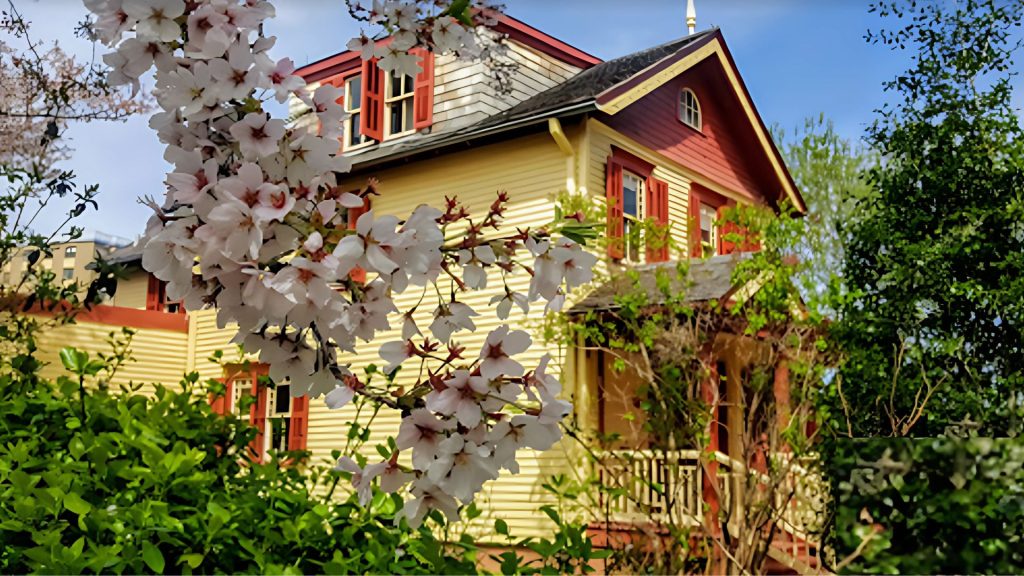
Newly Redesigned Museum Now Open
Tourist in Your Own Town #61 – Lewis Latimer House Museum
The Lewis Latimer House Museum in Flushing Queens was home to one of the United States’ greatest African American inventors. Lewis H. Latimer lived in this house from 1902 until his death in 1928.
Latimer, the son of fugitive slaves, worked with many famous inventors of his day. He was a pioneer in electric lighting and invented the long-lasting and affordable carbon filament for light bulbs. He was very active in the cultural and civic life of New York and his home was a gathering place for African American artists and civil rights leaders.
Learn more about Latimer and his important contributions by watching our video and then visiting this landmarked Queen-Anne style wooden house museum. Plan Your Visit 34-41 137th Street, Flushing, Queens For hours and directions, visit www.lewislatimerhouse.org.
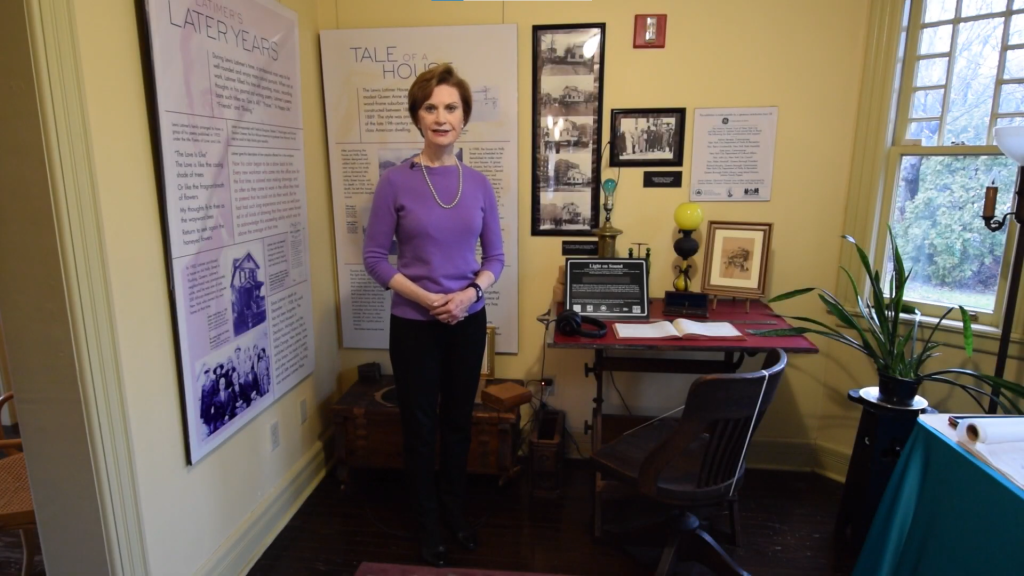
Black Americans Who Changed The World Against All Odds
100 Things You Didn’t Know Were Invented by Black People (Episode 1) 7/10/23
In this video, we step into a world where amazing inventions often get overlooked…. We’re about to reveal the stories of brilliant black inventors and their incredible contributions to modern technology. These inventors made things that changed our lives, even though not many people know about them. In this series, you will find just a few of the most impressive inventions by black inventors that were never mentioned in school.
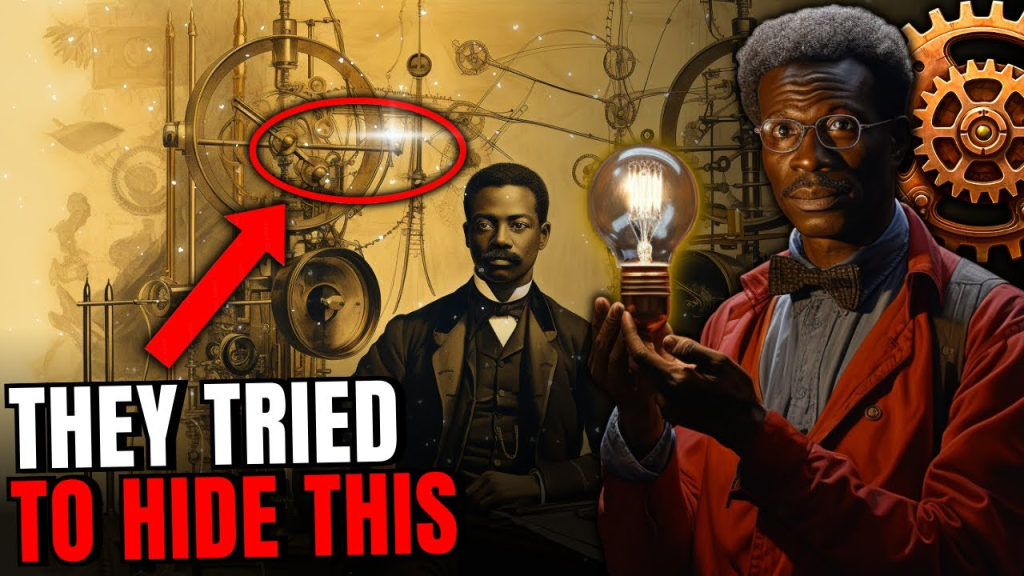
100 Things You Didn’t Know Were Invented by Black People (Episode 2) 7/22/23
100 Things You Didn’t Know Were Invented by Black People (Part 3) 8/17/23
100 Things You Didn’t Know Were Invented by Black People (Episode 4) 9/3/23
100 Things You Didn’t Know Were Invented By Blacks – Part 5 10/19/23

